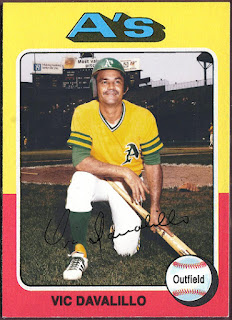On the blog today, we move on to the National League’s top winners for 1978, shown on a 1979 “expanded league leader” card from my long-running thread:
We begin with the 40-year-old wonder, Gaylord Perry, who would stun everyone with a season like no other for a man of his age, taking home the Cy Young Award that year by going 21-6 in his first season with the San Diego Padres.
Perry was just brilliant that year, leading the league with his 21 wins, while pitching to an excellent 2.73 earned run average, with two shutouts and five complete games while tossing 232.2 innings.
It was the 14th season in a row that Perry topped 200 innings, while also reeling off five 300+ inning campaigns during the stretch. Just incredible!
By taking home the Cy Young in 1978, he became the first pitcher in major League history to win the award in both leagues, previously winning the award in 1972 when he posted 24 wins for the Cleveland Indians.
In second place with 20 wins, another pitcher who had a very successful first season with his new club, Ross Grimsley, who had what turned out to be the best year of his career in 1978 in his first year with the Montreal Expos.
Grimsley went 20-11 for Montreal that year, with a 3.05 ERA over 263 innings in 36 starts, with three shutouts and 19 complete games, looking like an excellent pick-up for the franchise.
Sadly however, Grimsley would begin to deal with injuries the following season, winning only 10 games in 1979, and lasting only parts of the next three years before retiring for good, winning only seven games between 1980 and 1982
In third place tied with 19 wins apiece, the Atlanta Braves Phil Niekro and the Los Angeles Dodgers Burt Hooton, who both had very nice seasons for their respective teams.
For Niekro, the 39-year-old just missed his third 20-win season by going 19-18 over 44 appearances, 42 of them starts, posting a 2.88 ERA over 334.1 innings while tossing four shutouts and completing 22 games.
He would follow that up in 1979 by becoming like Perry, a 20-game winner at that age, famously winning 21 games while also LOSING 20 games, though by no means his own fault, posting a very nice 3.39 ERA while throwing an amazing 342 innings for Atlanta.
If that wasn’t enough, it’s mind boggling that he was STILL to go one for another eight years before retiring after the 1987 season, pitching until he was 48! Just amazing.
For the Dodgers’ Hooton, the solid starter who is pretty much forgotten these days, he won a career-best 19 games that season, helping the Dodgers make their second-straight World Series, posting a very nice 2.71 ERA over 32 starts with three shutouts and 10 complete games, easily the best season of his 15-year career that began in 1971 with the Chicago Cubs.
By the time he hung them up after a brief stint with the Texas Rangers in 1985, he’d end up with 151 wins and a very nice 3.38 ERA over 480 games, 377 of those starts, striking out just under 1500 batters in that time.
Next week, the American League’s top winners of 1978!














.JPG)




















